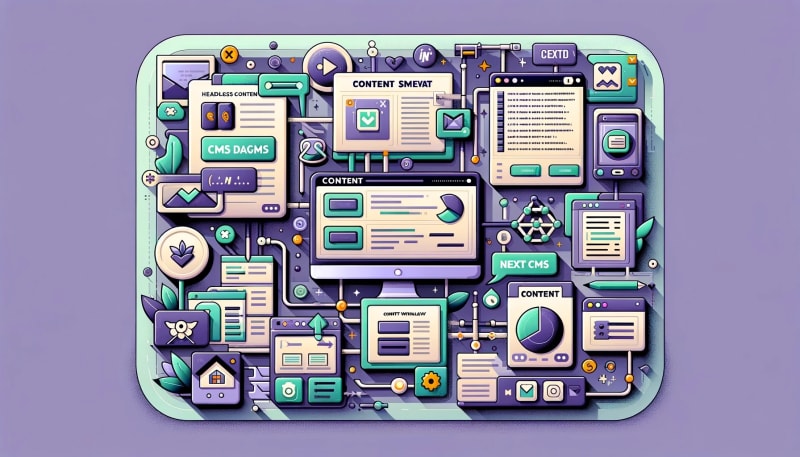Introduction
The integration of Next.js, a React-based framework, with headless Content Management Systems (CMS) is revolutionizing the development of content-rich applications. This article aims to dissect this powerful combination, highlighting the benefits it brings to developers and content managers alike. By separating content management from content presentation, this integration streamlines content delivery and enhances frontend development flexibility.
What is Headless CMS?
A headless CMS is a back-end-only content management system:
- Content Management and Delivery: It provides a way to store and manage content, with APIs for delivering this content to any frontend system, separate from the presentation layer.
- Role in Modern Web Development: In the modern development landscape, a headless CMS plays a crucial role by providing content as a service, which can be consumed by various frontends, including Next.js applications.
Benefits of Integrating Headless CMS with Next.js
Integrating a headless CMS with Next.js brings several key advantages:
- Improved Content Scalability: Content can be managed independently and scaled without affecting the frontend, ideal for growing applications.
- Enhanced User Experience: Next.js can dynamically render content from the CMS, leading to rich, interactive user experiences.
- Increased Development Flexibility: Developers gain the freedom to design the frontend without constraints imposed by traditional CMSs, allowing for creative and customized web solutions.
Implementing Headless CMS in Next.js Projects
To integrate a headless CMS with Next.js:
- API Integration: Utilize the headless CMS's API to fetch content in Next.js pages or components.
- Best Practices: Include caching strategies for API responses to improve performance, and structure content models in the CMS to align with the frontend architecture.
- Common Pitfalls: Avoid overfetching data and manage API keys securely to protect content access.
Case Studies: Successful Next.js and Headless CMS Integrations
Examples of successful integrations:
- Corporate Websites: Leveraging a headless CMS for managing and updating marketing content while using Next.js for a responsive and interactive website.
- E-commerce Stores: Integrating product information management through a headless CMS with a Next.js-based storefront for a seamless shopping experience.
Conclusion
The synergy of Next.js and headless CMS platforms represents a significant leap forward in building modern web applications. This combination offers enhanced flexibility, scalability, and user experience, making it an ideal solution for content-driven applications in today's digital landscape.
References
For deeper insights, the official Next.js documentation provides guidelines on API integration. Additionally, exploring documentation and resources from popular headless CMS platforms can offer practical knowledge for successful implementation.







Top comments (0)